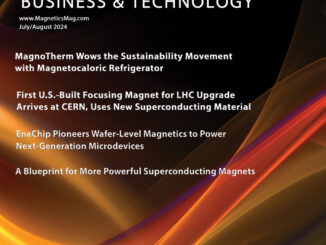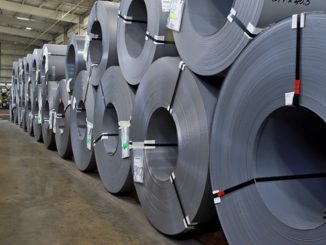By Thomas Schliesch, Head of Research & Development | Max Baermann GmbH
Max Baermann started to make bonded magnets in 1934 with predecessors of Alnico powder, which was mixed with Phenolic resin. Alnico and related materials were well known for their magnetic instability, until the invention of hard magnetic Ferrites in the 1950s meant a great leap forward. Nowadays Alnico has nearly completely vanished at least in Europe and a lot of efforts have been made to make materials more stable. So what is the current status? Is magnetic stability still an issue for bonded magnets?
Alnico was really a challenge. I remember times when we had to stabilize magnets, by both a heat and a coldness treatment as well as by a partial demagnetization with external fields, to let them be a safe product. Another problem closely related to the materials instability was its partially soft magnetic behavior. The flux lines within the final results of my first motor analysis of an Alnico based system had very surprising characteristics. The materials high differential permeability led the magnetic flux move into directions I would never have expected prior to that analysis.
Nowadays Alnico is gone completely and has been substituted by SmCo in those applications where a low reversible temperature coefficient of remanence is demanded. But even the partially bent demagnetization curve can cause troubles when counteracting magnetic fields or high temperatures can lead to a transfer of operating points to minor hysteresis curves. The effect becomes particularly critical when isotropic magnets are made of randomly oriented anisotropic powders. There demagnetization curves can be bent even at low demagnetizing field strengths. Also oxidation (better: chemical losses) can be an issue with SmCo powders.
Critical are those issues also with isotropic NdFeB materials as most commercially available powders for bonded magnets show a distinctly curved demagnetization behavior (in contradiction to sintered NdFeB). By this for a few customers we still produce magnets with external field stabilization after their magnetizing process. Chemical losses also play a serious role for NdFeB powders as the related magnets show grades of chemical aging, which are comparable to the losses from movements to minor hysteresis branches. Another issue that can arise is magnetic viscosity, which we could observe well when watching the time behavior of a few alloys of minor quality.
Fortunately manufacturers of isotropic rapidly quenched NdFeB powders have spent many efforts to produce improved alloys, so that a reduction of losses nowadays can be managed when choosing the right material. But still losses can be in the range of 5 percent or even more under extreme conditions. One lack of these improved alloys is their reduced remanence, but at least for automotive products we currently use them for the majority of our NdFeB magnets.
Anisotropic NdFeB materials made by the HDDR process showed above mentioned effects even by a much higher degree and for some years they were infamous in this respect. For a long time it was even a challenge to use them at temperatures above 80°C. But also here improvements have been made, but they are still less stable compared to the best isotropic NdFeB powders.
So what is about good old Ferrite? A couple of years ago I read somewhere that the total mass of worldwide permanent magnet production is still made of Ferrites by more than 90 percent. For my employer it is currently around 80 percent and we are very happy about this due to the universally known price issues of the Rare Earths. We are also very happy about the Ferrites magnetic stability, which is based on the magnificent rectangularity of their demagnetization curves. Sure, losses can happen here when very high counteracting fields make the operation points move to the irreversible area of hysteresis. That part of the self-demagnetizing effect which is caused by the magnets own internal H field here takes place at coldness, whereas in most other materials it takes place at heat. But this can be easily taken into account by an adequate design of the magnetic system as the major part of the demagnetizing curve is linear. And there is no chemical aging! In injection molded Ferrite magnets some stress relaxation at high temperatures can lead to small losses less than one percent within the first 24 to 48 hours, but then no additional losses can happen under usual application conditions.
But even Ferrites are not free of issues. Those can happen e.g. by material recycling as milling processes can lead to a reduction of coercivity and by this also to a movement of the sharp descend in the demagnetizing curve. It means this has to be taken into account during the design phase too.
So the answer to above question if stability is still an issue clearly is: Yes.
 About the Author
About the Author
Thomas Schliesch graduated in Physics from University of Hamburg in 1988 and joined the Max Baermann GmbH, which is a well-known manufacturer of bonded magnets in Germany, in 1989. Since 1993 he is Head of Research & Development at Max Baermann GmbH. A major part of his work he devoted to electromagnetic design and the development of specific methods for bonded permanent magnets. Thomas can be reached at t.schliesch@max-baermann.de.



